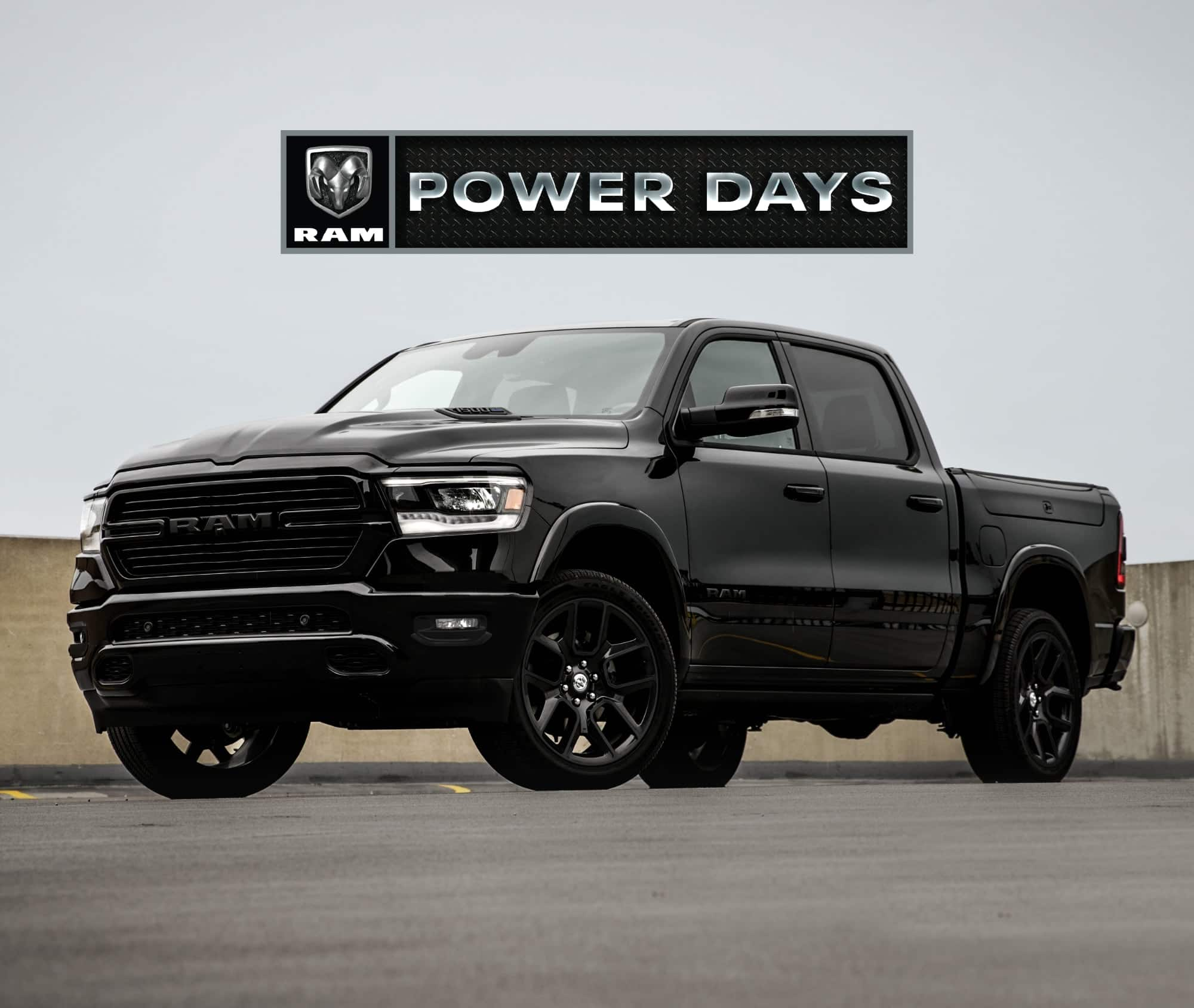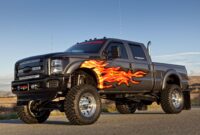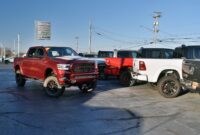Who Makes Ram Trucks: A Comprehensive Guide to the Powerhouse Behind the Iconic Brand cars.truckstrend.com
Introduction: Unpacking the Identity Behind Ram Trucks
When you see a Ram truck on the road, its distinctive grille and bold presence immediately signal strength, capability, and a certain American spirit. But have you ever stopped to wonder, "Who truly makes Ram trucks?" The answer is more intricate than a single name, involving a rich history of evolution, strategic corporate mergers, and a global manufacturing footprint. While many still associate Ram with its heritage as "Dodge Ram," the reality is that Ram has long since forged its own identity as a standalone brand under the umbrella of one of the world’s largest automotive conglomerates. This article will delve deep into the entity responsible for designing, manufacturing, and distributing these beloved trucks, exploring its origins, current structure, manufacturing processes, and future vision. Understanding who makes Ram trucks is not just about identifying a corporate name; it’s about appreciating the complex interplay of engineering, design, and strategic decision-making that brings these formidable vehicles to life.
Who Makes Ram Trucks: A Comprehensive Guide to the Powerhouse Behind the Iconic Brand
The Genesis of Ram: From Dodge to a Standalone Brand
For decades, the name "Ram" was synonymous with "Dodge." The Dodge Ram pickup truck was a staple of the American automotive landscape, renowned for its ruggedness and powerful engines. This association began in 1981 when Chrysler (then the parent company of Dodge) reintroduced the "Ram" badge to its pickup lineup, paying homage to the hood ornaments used on Dodge vehicles in the 1930s.
However, the automotive world is dynamic, and brands often evolve to better serve their markets. In 2009, a pivotal decision was made: Chrysler Group (then undergoing significant restructuring) spun off the Ram truck line into its own dedicated brand, simply called "Ram Trucks." This strategic move was designed to allow Ram to focus exclusively on the truck and commercial vehicle market, distinguishing its products from Dodge’s passenger cars and SUVs. The goal was to cultivate a stronger, more specialized brand identity, allowing Ram to directly compete with truck giants like Ford’s F-Series and General Motors’ Chevrolet Silverado and GMC Sierra. This separation enabled Ram to dedicate all its resources – from design and engineering to marketing and sales – to developing the best possible trucks, leading to significant innovations and market share gains in the years that followed.
Stellantis: The Parent Company Behind Ram
To truly understand who makes Ram trucks today, one must look to its ultimate parent company: Stellantis. Stellantis came into existence in January 2021 through the monumental merger of two automotive giants: Fiat Chrysler Automobiles (FCA) and Groupe PSA (the French multinational manufacturer of Peugeot, Citroën, Opel, and Vauxhall).
This merger created the world’s fourth-largest automaker by volume, a colossal entity with a diverse portfolio of iconic brands. Within Stellantis’s vast stable of brands, Ram Trucks stands as a key pillar, particularly in the North American market, where its profitability and market share are crucial to the group’s overall success. Stellantis provides Ram with the immense resources necessary for cutting-edge research and development, access to global supply chains, shared technological platforms, and the financial backing to compete at the highest level. This centralized structure allows Ram to leverage collective expertise in areas like powertrain development, advanced safety systems, and connectivity, while still maintaining its unique brand identity and focus on truck excellence.
Where Are Ram Trucks Made? Global Manufacturing Footprint
While Ram trucks are quintessential American vehicles, their production involves a complex network of manufacturing facilities, primarily located in North America. The two main assembly plants responsible for building the majority of Ram trucks are:

-
Sterling Heights Assembly Plant (SHAP) – Sterling Heights, Michigan, USA: This is a cornerstone of Ram 1500 production. SHAP is a highly advanced facility that has undergone significant investments to produce the latest generation of Ram 1500 light-duty pickups. Its strategic location in Michigan, near the heart of the American automotive industry, allows for efficient supply chain management and access to skilled labor.

Saltillo Truck Assembly Plant – Saltillo, Coahuila, Mexico: This plant is crucial for the production of Ram Heavy Duty trucks (2500, 3500, and chassis cabs), as well as some light-duty models for various markets. Saltillo’s role is vital in meeting the demand for Ram’s more robust and commercially oriented vehicles, serving both North American and international markets.
Beyond these primary assembly plants, Ram trucks also rely on a vast network of suppliers for components – from engines and transmissions (many of which are produced in other Stellantis facilities) to chassis, interior parts, and electronic systems. This global supply chain ensures efficiency, quality, and the ability to source the best possible parts for each vehicle. The "made in" label on a Ram truck represents the culmination of efforts from thousands of individuals and numerous facilities across different countries, all orchestrated by Stellantis.
The Design and Engineering Process: Innovation at Its Core

The journey of a Ram truck from concept to consumer is a meticulous process driven by innovation, consumer insights, and rigorous engineering. Dedicated teams of designers, engineers, and product planners within Stellantis work collaboratively to define the next generation of Ram vehicles.
The process typically begins with extensive market research to understand customer needs, preferences, and emerging trends in the truck segment. Designers then translate these insights into sketches and digital models, focusing on aesthetics, functionality, and aerodynamic efficiency. Once a design direction is approved, engineering teams take over, developing the vehicle’s architecture, powertrain options, suspension systems, and integrating advanced technologies. This involves sophisticated computer simulations, prototyping, and extensive real-world testing in various conditions – from extreme heat and cold to challenging terrains and heavy towing scenarios.
Ram’s commitment to innovation is evident in its continuous push for segment-leading features, such as the multi-function tailgate, RamBox cargo management system, air suspension, and advanced Uconnect infotainment systems. The development of electrified powertrains, exemplified by the upcoming Ram 1500 REV, also highlights the brand’s forward-thinking approach, ensuring that Ram trucks remain competitive and relevant in an evolving automotive landscape.
Quality Control and Assurance: Building Trust and Durability
For a brand built on strength and reliability, quality control is paramount. Stellantis implements stringent quality assurance protocols across all its Ram manufacturing facilities. This includes:
- Automated Inspections: Robotic systems and advanced sensors perform precise measurements and checks throughout the assembly line to ensure components fit perfectly and specifications are met.
- Manual Checks: Highly trained technicians conduct visual inspections and functional tests at various stages, from body shop and paint to final assembly.
- Component Testing: Individual parts and sub-assemblies are rigorously tested for durability and performance before being integrated into the vehicle.
- End-of-Line Testing: Every completed Ram truck undergoes a series of final checks, including dyno tests, wheel alignment, brake tests, and often a short test drive to ensure everything functions as intended before leaving the factory.
Ram’s focus on quality extends beyond the manufacturing floor, incorporating customer feedback and warranty data to continuously improve product design and manufacturing processes. This relentless pursuit of excellence is what builds the trust and loyalty associated with the Ram brand, ensuring its vehicles are not just powerful, but also dependable workhorses and reliable family transporters.
The Ram Brand Identity: More Than Just a Manufacturer
Beyond the nuts and bolts of manufacturing, "who makes Ram trucks" also encompasses the brand’s unique identity and its connection with its audience. Ram has successfully cultivated an image that resonates deeply with truck buyers. Its marketing strategies emphasize:
- Capability and Toughness: Highlighting impressive towing and hauling capacities, off-road prowess, and robust construction.
- Luxury and Comfort: Showcasing premium interiors, advanced technology, and a refined driving experience that blurs the lines between work truck and luxury vehicle.
- Innovation: Emphasizing features that make owners’ lives easier and more productive.
- Community and Loyalty: Building a strong connection with its customer base, often through initiatives that support tradespeople, veterans, and rural communities.
This comprehensive approach to brand building, orchestrated by Stellantis’s marketing and sales divisions, ensures that Ram trucks are not just seen as vehicles, but as essential tools and lifestyle enablers for their owners.
Challenges and Future Outlook
Despite its strong position, Ram faces ongoing challenges in the highly competitive truck market. Competitors are constantly innovating, and new regulations, particularly regarding emissions and fuel efficiency, demand continuous technological advancements.
The most significant challenge and opportunity lies in the transition to electric vehicles. Ram is actively addressing this with the upcoming Ram 1500 REV, an all-electric pickup truck designed to compete directly with electric offerings from Ford, Chevrolet, and Tesla. This move signifies Stellantis’s commitment to future-proofing the Ram brand, investing heavily in battery technology, charging infrastructure, and sustainable manufacturing practices. The future of Ram trucks under Stellantis will undoubtedly involve further electrification, autonomous driving features, and enhanced connectivity, ensuring the brand remains at the forefront of the truck segment.
Practical Advice for Ram Owners and Buyers
For those considering a Ram truck or current owners, understanding "who makes" your vehicle translates into practical benefits:
- Confidence in Quality: Being part of Stellantis means Ram benefits from vast engineering resources and stringent quality control, leading to reliable vehicles.
- Extensive Dealer Network: Stellantis’s broad footprint ensures easy access to authorized dealerships for sales, service, and parts.
- Parts Availability: Commonality of parts across Stellantis brands and a robust supply chain make maintenance and repairs straightforward.
- Future Innovation: Ram’s backing by a major global automaker ensures continued investment in new technologies, safety features, and powertrains, protecting your investment.
When purchasing, research specific models (1500, 2500, 3500) based on your needs for towing, payload, and daily driving. Regular maintenance, following the manufacturer’s schedule, is crucial for longevity and performance.
Concluding Summary
In conclusion, the question "who makes Ram trucks" leads us to Stellantis, a global automotive powerhouse born from the merger of Fiat Chrysler Automobiles and Groupe PSA. While Ram originated as a model within Dodge, it strategically spun off in 2009 to become a dedicated truck brand. Today, under Stellantis’s immense corporate umbrella, Ram benefits from unparalleled resources in design, engineering, manufacturing, and global distribution. Its trucks are primarily assembled in advanced facilities in Michigan and Mexico, supported by a worldwide network of suppliers. This intricate ecosystem ensures that every Ram truck upholds its reputation for capability, durability, and innovation, firmly positioning the brand for continued success in the evolving automotive landscape.
Price Table: Representative Starting MSRPs for Ram Truck Models
While "who makes Ram trucks" (Stellantis) does not have a "price," the vehicles they produce do. Below is a table illustrating the representative starting Manufacturer’s Suggested Retail Prices (MSRPs) for popular Ram truck models. Please note that these are approximate starting prices for base models and can vary significantly based on trim level, engine choice, optional features, location, and market conditions.
| Ram Truck Model | Category | Representative Starting MSRP (USD) | Key Features (Base Model) |
|---|---|---|---|
| Ram 1500 | Light Duty | ~$39,000 – $42,000 | V6 or V8 Engine, Coil-spring rear suspension, Infotainment |
| Ram 2500 | Heavy Duty | ~$47,000 – $50,000 | V8 Gasoline or Cummins Diesel, High Towing/Payload Capacity |
| Ram 3500 | Heavy Duty | ~$49,000 – $52,000 | V8 Gasoline or Cummins Diesel, Maximum Towing/Payload, Dually Options |
| Ram ProMaster | Commercial Van | ~$45,000 – $48,000 | Front-wheel drive, High roof options, Cargo/Passenger configurations |
Note: Prices are for illustrative purposes and subject to change by the manufacturer. They do not include destination charges, taxes, or dealer-added options.
Frequently Asked Questions (FAQ) About Who Makes Ram Trucks
Q1: Is Ram still part of Dodge?
A1: No, Ram separated from Dodge in 2009 to become its own standalone brand focused exclusively on trucks and commercial vehicles. While they were historically linked, they now operate as distinct brands under the same parent company, Stellantis.
Q2: Who is the current parent company of Ram Trucks?
A2: The current parent company of Ram Trucks is Stellantis. Stellantis was formed in January 2021 through the merger of Fiat Chrysler Automobiles (FCA) and Groupe PSA.
Q3: Where are Ram trucks primarily manufactured?
A3: The majority of Ram trucks for the North American market are manufactured in two key assembly plants: the Sterling Heights Assembly Plant (SHAP) in Sterling Heights, Michigan, USA (primarily Ram 1500), and the Saltillo Truck Assembly Plant in Saltillo, Coahuila, Mexico (primarily Ram Heavy Duty and some 1500 models).
Q4: Are Ram trucks considered American-made?
A4: Yes, Ram trucks are largely considered American-made due to their primary assembly plants being in the USA and Mexico, and a significant portion of their components sourced from North American suppliers. However, like most global automakers, components may come from various international sources.
Q5: What are Stellantis’s plans for Ram trucks in the future?
A5: Stellantis is heavily investing in the future of Ram trucks, particularly focusing on electrification. The upcoming Ram 1500 REV (Ram Electric Vehicle) is a major step in this direction. Stellantis also plans to continue innovating with advanced technology, safety features, and connectivity to maintain Ram’s competitive edge.
Q6: Does Ram use engines from other Stellantis brands?
A6: Ram trucks often use engines and transmissions developed by other parts of the Stellantis group. For example, the popular HEMI V8 engines and certain diesel powertrains are integral to Ram’s lineup but are part of a broader powertrain portfolio within Stellantis.
Q7: How does being part of Stellantis benefit Ram?
A7: Being part of Stellantis provides Ram with significant advantages, including access to vast financial resources, shared research and development capabilities, global supply chains, and a broad network of dealerships and service centers. This allows Ram to innovate and compete effectively on a global scale.




